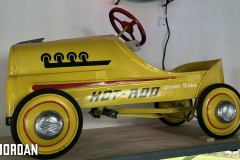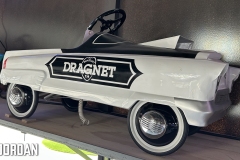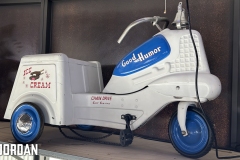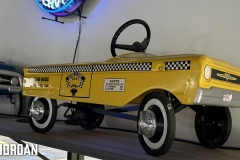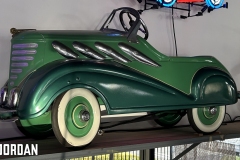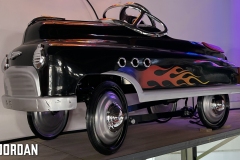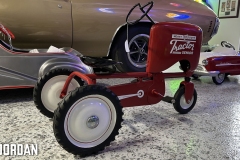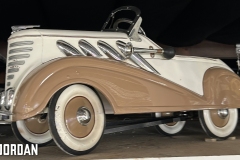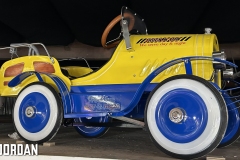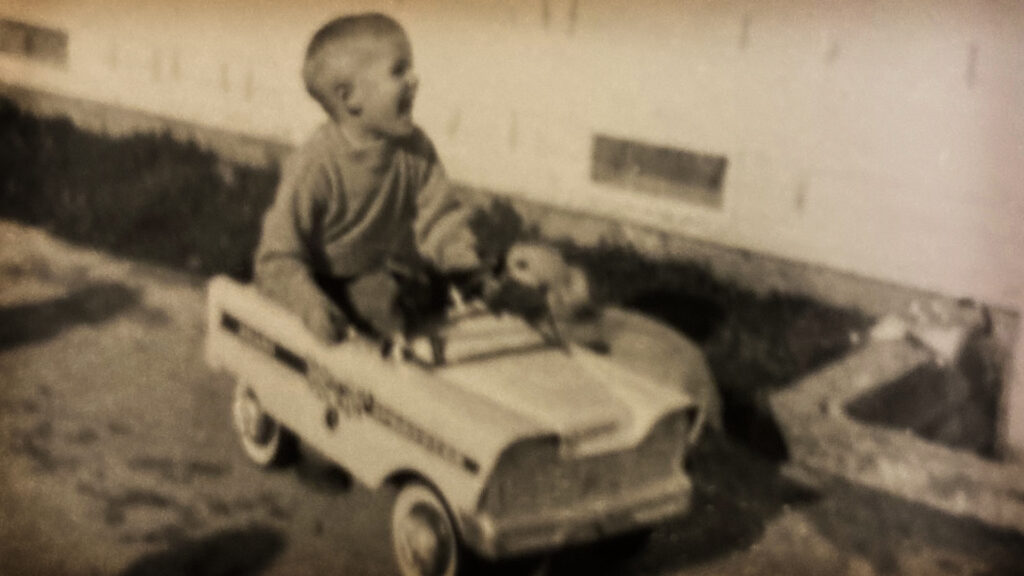
Tin Dreams and Tiny Wheels: The Storied History of the Pedal Car
You remember it, don’t you? That first ride — not in your old man’s pickup or the hand-me-down busted-up Schwinn — but in your own sleek, chrome-trimmed chariot. It had white-wall tires (plastic, sure, but still), a grille that meant business, and a bell that rang out with pride. The pedal car. The miniature miracle of postwar youth and American ambition.
Today, it might sit dusty in a corner of a garage or reborn at a swap meet, but the pedal car once ruled the sidewalks with as much swagger as any ’32 Ford on Route 66. Let’s take a cruise through the history of these pint-sized classics.
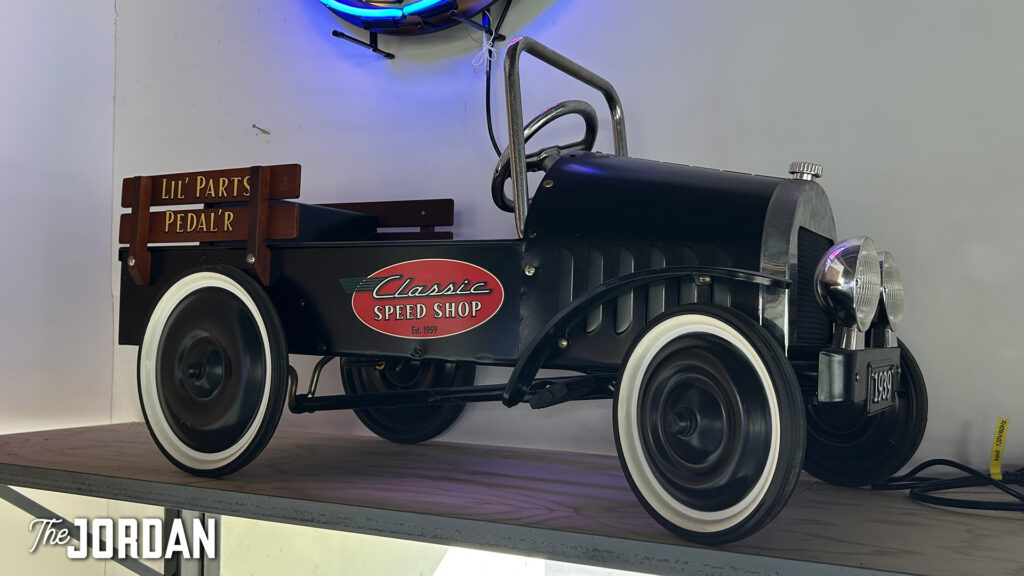
Pedal to the Metal: Early Days (Late 1800s–1920s)
The earliest pedal cars hit the streets in the 1890s, around the same time horseless carriages were rolling off early assembly lines. These primitive versions were heavy, often made of wood, and far from the sculpted mini-machines we romanticize today. More function than form — if you consider making little Billy feel like Barney Oldfield a function.
As the auto industry found its footing, so did the pedal car. Companies like Garton Toy Company (founded in 1879 in Sheboygan, Wisconsin) and Steelcraft started crafting kid-sized replicas of the era’s Packards, Buicks, and Studebakers. These early pedal cars were metal-bodied masterpieces with stamped fenders, rubber tires, and steering wheels that actually turned.
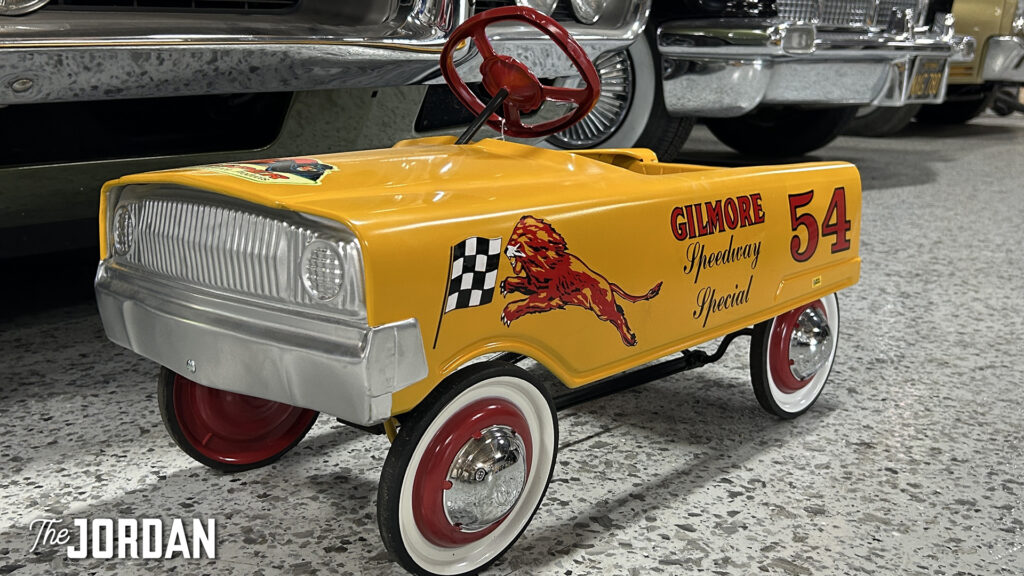
Boom Time Baby: The 1930s–1950s
The golden age of the pedal car mirrors the golden age of Detroit. During the Depression, pedal cars were a luxury item — but by the time the war ended and America was cashing in its GI Bills, these miniature rides were back in the spotlight.
In the 1940s and ’50s, pedal cars took cues straight from Motor City’s styling departments. Wraparound windshields, bold grilles, even faux jet intakes. Think of them as the Detroit iron you wanted when you were five — a ‘53 Cadillac Eldorado with flames, but two feet long and powered by your legs.
Murray, American National, and Garton were among the big players, pumping out tens of thousands of models. Some even came with battery-powered lights and working horns. Parents lined up to gift their kids a slice of freedom, even if it only extended to the end of the driveway.
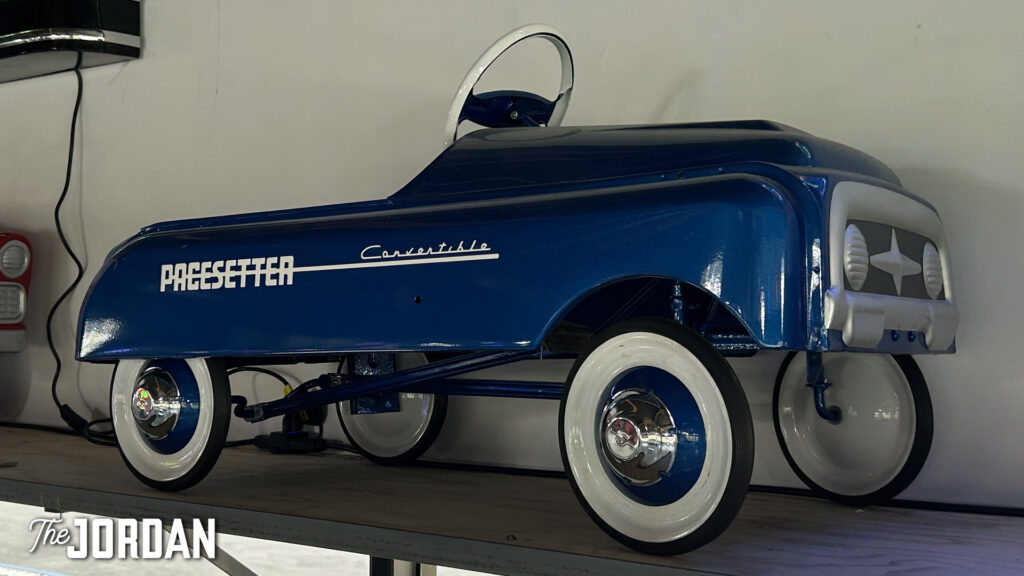
Plastic Fantastic and the Decline (1960s–1980s)
By the late ’60s, the writing was on the wall — or rather, the plastic was in the mold. With rising production costs, the once-heavy steel bodies gave way to lightweight (and frankly, flimsy) plastic models. Durable? Sure. Nostalgic? Not quite.
The rise of Big Wheels and motorized ride-ons in the ‘70s and ‘80s also put the squeeze on the pedal car. Kids wanted speed, not realism. You couldn’t do a power-slide in a Murray Fire Truck. But for those who grew up with chrome and hand-cranked adventure, the soul of the pedal car still burned hot.
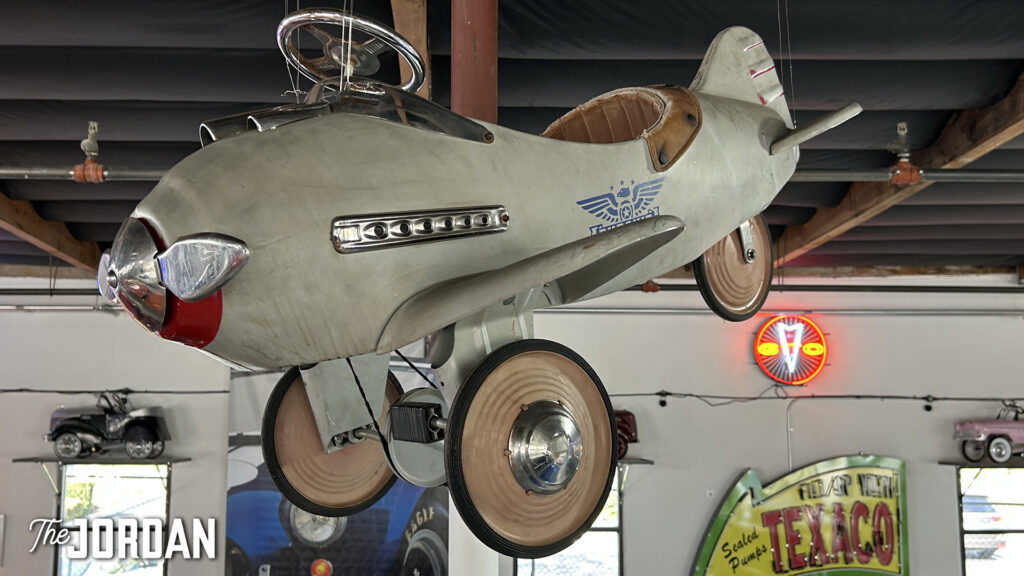
Rust Revival: 1990s–Today
Like everything worth remembering, the pedal car made a comeback. Starting in the 1990s, collectors, restorers, and nostalgia-junkies started hauling these metal beauties out of barns and flea markets. The pedal car found its way into man caves, garages, and car shows — sometimes restored to concours condition, sometimes left in glorious, rust-speckled patina.
Some gearheads restore them to match their full-sized rides — a ’55 Bel Air in the garage and its pint-sized twin on a shelf. Others fabricate custom versions with hot rod flames, pinstripes, even chopped tops and moon discs. Mini-kustom kulture in action.
Today, you’ll find pedal cars fetching serious coin at auctions, especially pre-war models in original paint. But more than the price tag, it’s the story they tell — a story of America’s car-crazy youth, crafted in steel, dreams, and the power of two little feet.
Final Lap
The pedal car isn’t just a toy. It’s a cultural artifact. A first taste of horsepower. A symbol of simpler times when the world was big, the sidewalks were smooth, and your imagination handled the steering.
Whether you’re wrenching on a Deuce Coupe or a 1957 Pontiac pedal car, remember: it all started with that first ride — knees pumping, heart racing, sun in your eyes, and a chrome hood ornament leading the way.

